| Srl | Item |
| 1 |
ID:
185948
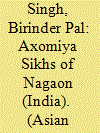

|
|
|
|
|
| Summary/Abstract |
In the villages of Nagaon district of Assam(India), Axomiya Sikhs are residing for the past two centuries. They are the believers and practitioners of their religion though not averse to local customs and festivals. They are immersed in the language and culture of Assam and many have got name and fame in their respective fields including Assamese literature. They claim to be the descendants of Sikh soldiers from Punjab sent there by Maharaja Ranjit Singh to help the Ahom ruler in 1820. The present paper explores the question of their social, religious and linguistic identity. They were contented with themselves until they interacted with the Punjabi Sikhs in Assam, relatively recent settlers, who call them ‘duplicate Sikhs’. They are now in a dilemma with regard to their Sikh identity. The data are collected from a sample of 365 respondents. This is the only empirical study after Medhi’s work in 1989.
|
|
|
|
|
|
|
|
|
|
|
|
|
|
|
|
| 2 |
ID:
185947


|
|
|
|
|
| Summary/Abstract |
The Kashmir has an intriguing political and social landscape. The idea of Kashmir is nonetheless guided by multiple narratives created by different stakeholders in Kashmir. The Kashmir falls under the control of three nuclear powers, namely India, Pakistan and China. The accession of an erstwhile princely state of Kashmir to India had different conflicts in store, with the result of which South Asian nuclear-armed neighbours fought three wars to claim the Kashmir territory, besides coming close to a nuclear blaze. The argumentation about the Kashmir among different stakeholders in Kashmir poses the threat to peace in South Asia. We look at different perspectives of various stakeholders. In this paper, we attempt to emphasize that why none of the stakeholders wants a resolution for Kashmir conflict and why all of them want Kashmir, if not to burn but it must simmer continuously.
|
|
|
|
|
|
|
|
|
|
|
|
|
|
|
|
| 3 |
ID:
185955
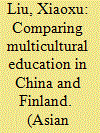

|
|
|
|
|
| Summary/Abstract |
Over the last several decades multicultural education has played a key role in many educational policies and practices internationally. In this article, the author examines multicultural education in the Chinese and Finnish contexts through a comparative study. The comparison includes the scope of diversity, the policy and practice of multicultural education, and what two distinct educational systems can learn from each other. A critical multicultural education framework and pluralistic unity nationality theory have been employed to discuss the policy and practice of multicultural education in both countries. The analysis clarifies commonalities and context-bound differences. Implications and suggestions for further development of multicultural education in both countries are also explored.
|
|
|
|
|
|
|
|
|
|
|
|
|
|
|
|
| 4 |
ID:
185951
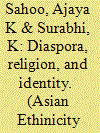

|
|
|
|
|
| Summary/Abstract |
Globalization associated with development in information and communication technologies ushered diasporas to play an important role in marketing the homeland culture globally. Among the many traditional Indian art forms that are getting visible transnationally today is the Theyyam. Theyyam is a traditional ritual art form of worship observed in the Kannur and Kasargod districts of Northern Kerala state in India. It is the folk God for North Malabaris which is accompanied by dance and other rituals. There are approximately four hundred varieties of Theyyams and several of them are performed in the diasporas. This article argues that when the Theyyam is performed transnationally, the true essence of the ritual art form changed compared to its performance in the original settings and thereby opens up for commodification. Ethnographic data for this study derives from in-depth interviews with Theyyam artists, informal conversations with Theyyam devotees and villagers besides observation of Theyyam performances.
|
|
|
|
|
|
|
|
|
|
|
|
|
|
|
|
| 5 |
ID:
185950


|
|
|
|
|
| Summary/Abstract |
This paper articulates the issue of ethnicity and identity formation among the Misings of Assam. It navigates the life graph of the community and unearthed the subtlety involved in their identity formation, articulation and assertion. The nuances involved in their identity formation and the subsequent intra-community ethnic fragmentation reflect the fact that the case does not purely fit into a singular theoretical framework of either ‘primordialism’ or ‘constructivism’. Rather it necessitates the call for traversing through different theoretical frameworks. On a descriptive note, the paper tends to examine the role of social, political and historical forces influencing the Mising identity narratives. Besides delineating the historical trajectories of Mising identity in different historical periods, – pre-colonial, colonial and post-colonial – the study has explored the multiple processes of identity formation vis-a-vis migration, politics of (re)naming, role of middle class organisations and the vitality of script and language.
|
|
|
|
|
|
|
|
|
|
|
|
|
|
|
|
| 6 |
ID:
185954
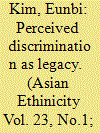

|
|
|
|
|
| Summary/Abstract |
In this study, we examine how Korean immigrants employed at co-ethnic multinational enterprises (MNEs) perceive their work experiences based on their past employment in the USA. Using 63 in-depth interviews conducted from June 2012 to December 2014, we found that Korean immigrants have different job attitudes and career prospects depending on their experiences of workplace discrimination in the USA. The findings suggest that immigrants who previously worked in the mainstream economy have developed a higher level of racial/ethnic awareness through racialized experience than their counterparts who only worked for co-ethnic employers. Such disparities in awareness shape the workers’ job attitudes and their career prospects. We conclude that the knowledge on the host society’s racial/ethnic stratification, once established, comes into effect continuously in immigrants’ lives and strongly influences the immigrants’ attitudes toward their socioeconomic incorporation.
|
|
|
|
|
|
|
|
|
|
|
|
|
|
|
|
| 7 |
ID:
185949
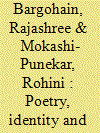

|
|
|
|
|
| Summary/Abstract |
This paper hopes to argue that the representations of and engagements with landscape by poets writing in English in Northeast India are embedded within the larger cultural and political contexts of the region. Indigenous communities across the world attach profound cultural, political, economic and spiritual significance to the territories they traditionally inhabit. It is for this reason that the preservation of their natural environment becomes crucial to the preservation of their cultural identities. Representations of the landscape by poets of Northeast India reflect the significance attached to and the intimate relationship shared with the natural environment by its diverse indigenous communities. The poets also display their awareness of the threats of ecological degradation faced by the region and the anxiety these threats have produced amongst the local population. The paper will try to understand the political dynamics behind the nostalgic associations ascribed to landscape in the poetry written in English in Northeast India.
|
|
|
|
|
|
|
|
|
|
|
|
|
|
|
|
| 8 |
ID:
185952


|
|
|
|
|
| Summary/Abstract |
The Treaty of Yandabo (1826) marked the colonial conquest of the Brahmaputra valley. Following two decades witnessed calculations and speculations about the prospect of the region as a part of the British colonial empire. Discovery of tea plants and the existence of tradable commodities such as cotton, silks and salt made the region look promising for the East India Company. The early-colonial rulers introduced policy changes in the1820 s and the 1830 s. Existing historiography on wasteland rules has clarified that these regulations were aimed at making land available for tea plantations. At the same time monetization of the region with one uniform currency was undertaken. This paper argues that in the face of these developments, commerce remained an important part of the economy, as before. Creation of a land market by wasteland regulations and uniform coinage facilitated the Empire’s trade and made the region a part of the colonial commerce.
|
|
|
|
|
|
|
|
|
|
|
|
|
|
|
|
| 9 |
ID:
185946
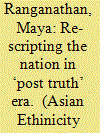

|
|
|
|
|
| Summary/Abstract |
This paper evaluates the ways in which new national narratives are sought to be constructed in ‘post-truth’ era – marked by what Harsin terms competing convictions, discord and confusion and attempts to manage the communication environment. New technologies and online spaces facilitate the ‘re-creation’ and ‘re-construction’ of the past and are co-opted in the nation building project. In the context of extensive studies on how the democratic potential of new technologies is subverted, this paper calls for specific attention to the ways in which (imprecise) history forms part of discursive nationalism in present times. Taking up India as a case study, the paper explores and evaluates the strategies employed in the rescripting of the national narrative potentially leading to new national memory.
|
|
|
|
|
|
|
|
|
|
|
|
|
|
|
|
| 10 |
ID:
185956


|
|
|
|
|
| Summary/Abstract |
A lasting legacy of colonial rule across the world is the political salience of ethnicity in many modern postcolonial nation-states. Upon independence, these nation-states had to grapple with the challenging task of nation-building amidst often tense inter-ethnic group relations. This article examines and compares the state approaches towards ethnic diversity of two former British colonies in Southeast Asia – Myanmar and Malaysia. It finds that in both countries, the key similarity is that the state has favoured the numerically dominant ethnic group in its policies. However, while the main ethnic divisions in Myanmar are within the indigenous ethnic groups, the Malaysia’s ethnic divisions lie along an indigenous/non-indigenous dichotomy. Given the long histories of these ethnic divisions, any long-term solution will be challenging, but is arguably not impossible. A closer analysis of nationalist concepts in Myanmar and Malaysia suggests that moving towards a more civic form of nationalism is possible.
|
|
|
|
|
|
|
|
|
|
|
|
|
|
|
|
| 11 |
ID:
185953
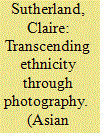

|
|
|
|
|
| Summary/Abstract |
This article explores how photographs selected from an archive represent the Cham ethnic group. It argues that portrait photographs provide a useful analytical focus for critiquing ethnonational categories and their visual representations. Cham live across Southeast Asia, speak a Malayo-Polynesian language and exemplify the global and protracted nature of forced displacement. Little unites them beyond their self-identification as such, and their minority status in every country they call home. The article examines the extent to which selected photographs engage with and challenge dominant depictions of Cham ethnicity as a basis for considering an alternative approach to belonging that is not bound to the dichotomy of self and other. It concludes that the materiality of the sea holds greater potential to capture the emotional and atemporal elements of living as a migrant or an ethnic minority than analyses trapped within the linear and bounded spatiotemporal frames that create those conceptual categories.
|
|
|
|
|
|
|
|
|
|
|
|
|
|
|
|